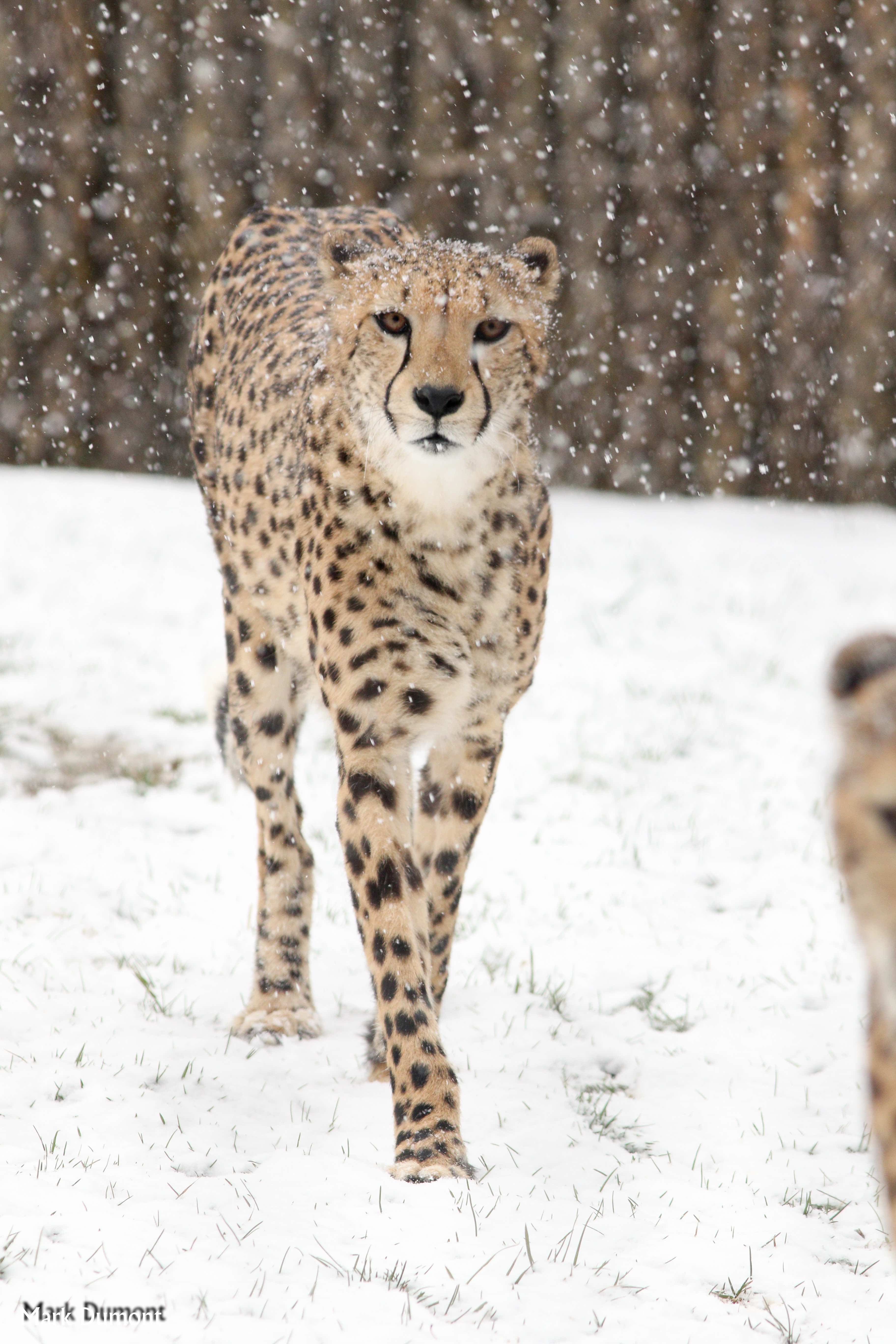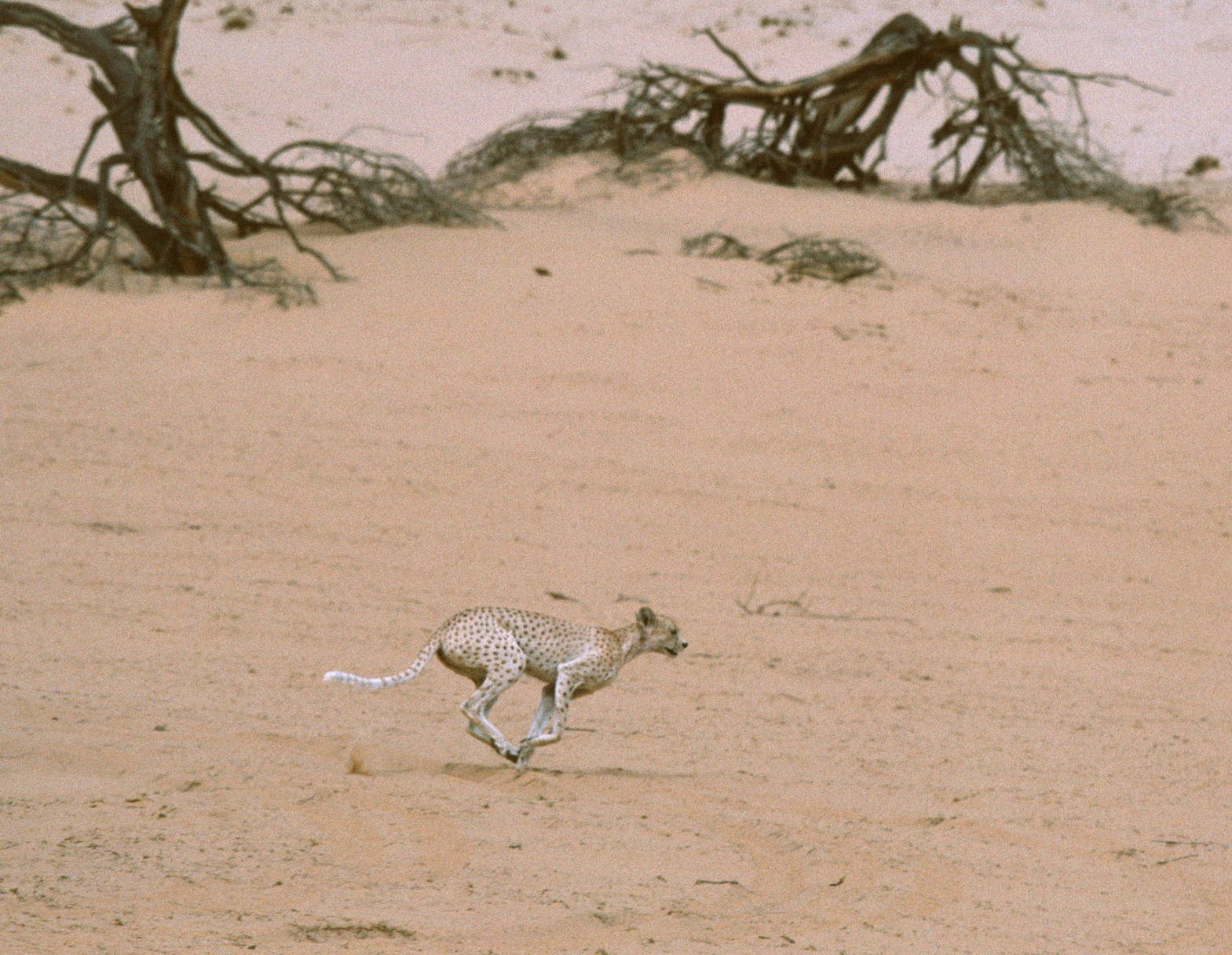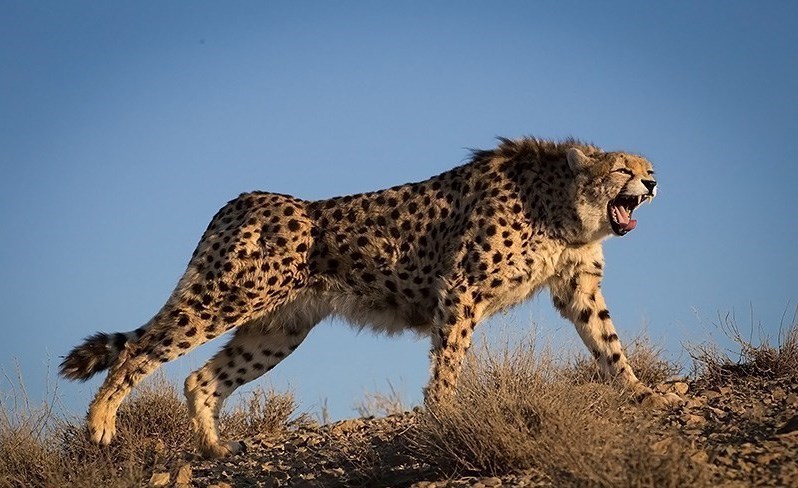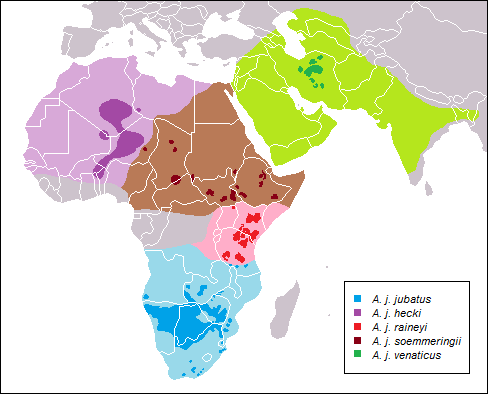Ghostly Cats and Felids in the Snow: Meet the Asiatic and Saharan Cheetah Subspecies
By Sam Williams in Zoology |
Zoology | Picture a cheetah (Acinonyx jubatus), and chances are that you imagine a spotted cat in the African sun. You probably weren't thinking about the cheetahs braving the snow in the mountains of the Middle East. Or ghost-like cats with their distinctive spots and tear stripes muted or absent. Meet the Asiatic (A. j. venaticus) and the Saharan (A. j. hecki) cheetah subspecies.

All cheetahs share certain characteristics, such as the traits that allow them to chase prey at over 90 km/h, faster than any other land animal on Earth. These include powerful hind legs, long limbs, and a flexible spine to provide explosive acceleration; wide nostrils and enlarged nasal passages provide enough air while sprinting; a streamlined shape to produce minimal air resistance; and semi-retractile claws and long tail to help them change direction at high speed.
But while all cheetahs across the world share these traits, cheetahs in some areas can be a little different from cheetahs in other areas, a phenomenon known as the subspecies concept . Cheetahs found in Iran, known as the Asiatic cheetah, are genetically distinct from other cheetahs, and they are slightly smaller with a lighter build than other subspecies . Cheetahs in the Sahara and Sahel, known as the Saharan or Northwest African cheetah, are also smaller than other cheetahs, and they have paler and shorter fur . They may have few or no spots on the face, and even the distinctive tear stripes can be faint or absent , giving them a ghostly appearance, especially considering that the word cheetah is derived from a Hindu word meaning "spotted one" .

Both the Asiatic and Saharan cheetahs are thought to feed on species that differ from the staples more typical of cheetah elsewhere . Asiatic chetahs feed on goitered gazelle (Gazella subgutturosa), and wild boar (Sus scrofa), in addition to rodents (order Rodentia) and hares (Lepus spp.) . The species in the preferred weight range of the Saharan cheetah include red-fronted gazelle (Gazella rufifrons), Buffons kob (Kobus kob kob), dorcas gazelle (Gazella dorcas), and slender-horned gazelle (Gazella leptoceros) . In addition to feeding on unusual prey, cheetahs in these extreme environments tend to be more nocturnal than cheetahs in other areas, in order to avoid heat exhaustion .

Similar to other large felid species, the number of cheetahs has declined rapidly over the past century, and they have lost over 90% of their historic range . The former range of cheetahs comprised most of Africa outside the rainforests, the Middle East including the Arabian peninsula and the eastern part of Turkey, the southern Eurasian steppe, and large parts of India. The last stronghold of the Asiatic cheetah is the eastern-central arid region of Iran, where the human population density is very low. With only 7,100 individuals remaining globally , cheetahs are listed as Vulnerable on the IUCN Red List of Threatened Species , meaning that they face a high risk of extinction in the wild . But both the Asiatic and Saharan subspecies of cheetah - numbering fewer than 40 and 250 individuals respectively - are listed as Critically Endangered , the most severe threat category before Extinct in the Wild. What are the major threats to these subspecies, and how can we conserve them?

Persecution by herders (and their dogs), and roadkill are some of the key threats to the Asiatic cheetah , while loss of prey base and habitat are important threats to both Saharan and Asiatic cheetahs . It is critical that action is taken now to address these threats, such as reducing the number of domestic dogs taken into protected areas by herders, installing wildlife crossings and fencing at roadkill hotspots on roads, curbing ungulate poaching and overgrazing by livestock , and incentivising communities to conserve wildlife while providing alternative sources of income and protein . The Conservation of the Asiatic Cheetah Project and the Iranian Cheetah Society are working to conserve the cheetah in Iran, but without this urgent action , these ghosts might just disappear entirely.
If you would like to make a donation to support cheetah conservation efforts, consider donating to the Iranian Cheetah Society, Panthera or Cheetah Conservation Fund.
To find out more about Sam follow him on Twitter at @_sam_williams_, or check out his website at samualwilliams.com.
Responses